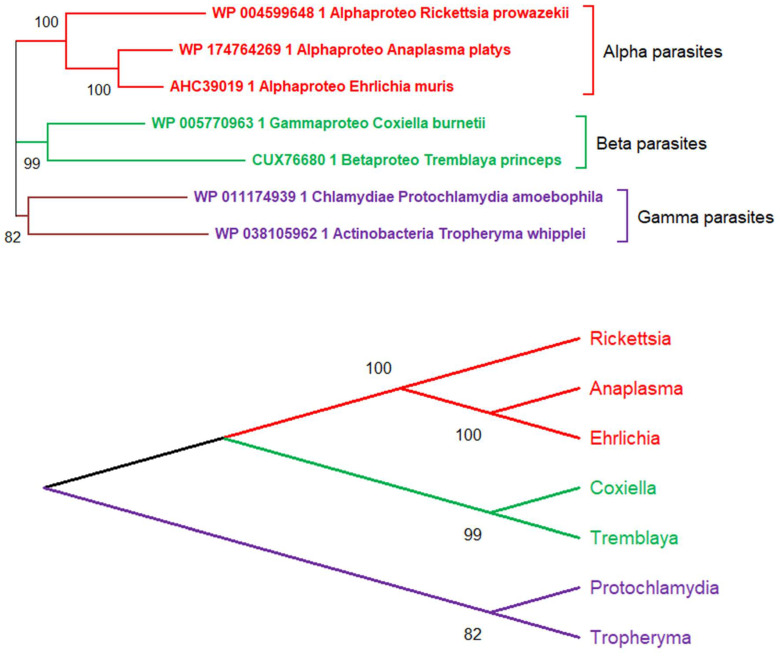Figure 1.
Erroneous phylogenetic relationships between seven obligate intracellular parasitic bacteria. Top: The neighbor-joining tree was generated from 1014 conserved sites in the multiple alignment of their DNA polymerase alpha subunits using the JTT substitution matrix. The protein NCBI identifiers are indicated. In absence of free-living bacterial relatives, the tree erroneously suggests (with a strong statistical support) the existence of 3 separate “parasite families” emerging from 3 distinct evolutionary branches (Alpha, Beta, Gamma). Bottom: Using a different representation, the tree topology (inherent to the tree-building algorithm) can be interpreted as supporting the existence of an ancestral obligate parasite from which all three families of extant parasites derived. The true evolutionary history of these parasitic bacteria is shown in Figure 2.

